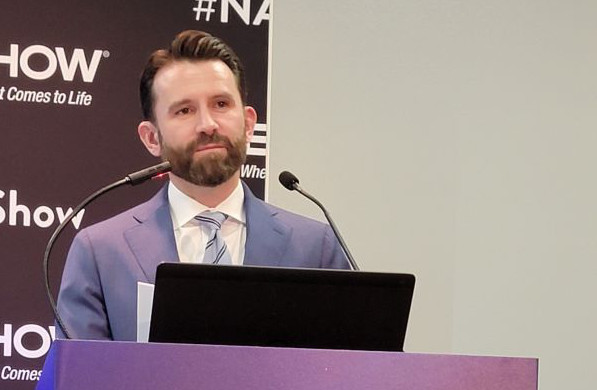National EAS Test Results Look Positive, But There Are Issues
WASHINGTON—Anecdotal evidence points to general success of yesterday’s national EAS system test, according to broadcasters and a major EAS equipment vendor. However, despite the test’s overall success, a nagging known problem stemming from FCC rules that require no delay in the turnaround and transmission of EAS messages persists.

Ed Czarnecki
“Overall, from the information that we have gotten so far, it sounds like the EAS test was a success,” says Ed Czarnecki, senior director, Strategic & Government Affairs at Monroe Electronics.
The FCC—along with the Federal Emergency Management Administration—will compile the reports of test results from broadcasters and is expected to release its assessment of how the system performed in mid-November. The FCC also has extended the deadline to file test results till Nov. 13 for stations affected by the recent hurricanes.
Like last year’s test, a bit of a problem that resulted in relatively poor audio quality and display of a generic EAS message plagued roughly half of TV broadcasters involved, according to Czarnecki. The problem grows out of having both the traditional over-the-air EAS daisy chain and FEMA’s Common Alerting Protocol (CAP) in use concurrently, he says. When a station’s EAS hardware receives a traditional OTA EAS alert before its scheduled check of the Integrated Public Alert and Warning System (IPAWS) server for a new CAP-based EAS message, the device automatically responds without pause to rebroadcast the alert and default to a generic EAS text message loaded into its memory.
“EAS devices typically do one poll [of the IPAWS server] per minute,” says Czarnecki. “We are quoting our customers once every 30 seconds.” Statistically, this circumstance results in about 50 percent of the stations deriving their EAS message as CAP data and 50 percent from the traditional EAS system, he adds. “If the upstream monitoring source polls before you, it’ll grab the EAS message, post it over the air and in a classic example of a race condition, the EAS message can get to a broadcaster via an upstream source before the downstream source has had a chance to poll.”
Monroe Electronics has asked the FCC to change a rule to allow EAS device manufacturers to add a feature to enable an automatic IPAWS system poll once any broadcast EAS message is received and then generate the audio and text emergency alert with the CAP-based data. But so far, there has been no movement at the agency, he says.
Get the TV Tech Newsletter
The professional video industry's #1 source for news, trends and product and tech information. Sign up below.
At KPTM, the Sinclair Broadcast Group-owned Fox affiliate in Omaha, Neb., the national EAS test went well, says broadcast engineer Jim Skinner. “I would say we passed the test,” says Skinner, who also is the TV representative to Nebraska’s State Emergency Communications Committee.
However, the EAS message broadcast by KPTM, KXVO, the CW affiliate that Sinclair operates under an LMA, and their digital subchannels was triggered by reception of a traditional EAS radio transmission. “Being that the source came from radio before the IPAWS CAP message, the crawl was generic and not specific to the test and the audio quality was very poor, but understandable,” says Skinner.
It took between one and two minutes for the station’s EAS system to receive the IPAWS CAP message and replace the built-in generic EAS text message and lower quality audio with the specific National Periodic Test message, he adds.
At Twin Cities PBS in St. Paul, Minn., the national EAS test was generally a success, says Don Heppelmann, technologist at the public broadcaster. “It went reasonably well,” he says, adding that in the case of Twin Cities PBS, the EAS message originated with the CAP data.
While the test was successful for the broadcaster’s English-language service, a second, newly installed EAS device dedicated to multilingual alerts for Spanish-, Somali- and Mung-speaking viewers, did not work properly. Heppelmann attributes the problem to not having sufficient time to test the unit before the nationwide test. “I wish I would have had another week or two to configure the unit dedicated to providing multilingual alerts,” he says.
While the industry waits for the government to compile its data to see how it did on the nationwide test, some broadcasters like Heppelmann, are already thinking of ways FEMA can improve next year’s test. “I hope FEMA does next year’s test with live audio,” he says. “We are testing the EAS system, and the idea behind it is that a live person will talk into a microphone. That’s not been done to my knowledge for a national test, and I sure would love to see that happen.”
Phil Kurz is a contributing editor to TV Tech. He has written about TV and video technology for more than 30 years and served as editor of three leading industry magazines. He earned a Bachelor of Journalism and a Master’s Degree in Journalism from the University of Missouri-Columbia School of Journalism.

